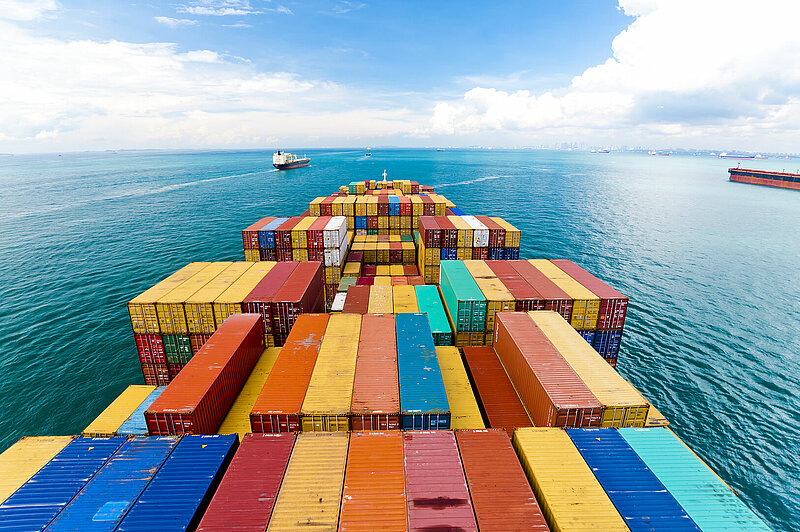Search

![Container ship docked at a port with cranes unloading cargo, representing global shipping and 3PL port logistics services.] Container ship docked at a port with cranes unloading cargo, representing global shipping and 3PL port logistics services.]](/fileadmin/_processed_/3/a/csm_Container_Ship_22132_19f3cc712a.jpg)
In today's competitive supply chain environment, businesses constantly search for smarter, leaner ways to ship goods. Less than Container Load (LCL) shipping is one of those cost-effective solutions—especially when combined with the services of an experienced third-party logistics (3PL) provider like Gebrüder Weiss. If your cargo doesn't fill an entire container, LCL could be the right strategy to save money and gain logistical flexibility.
LCL shipping is an ocean freight method that allows businesses to ship smaller volumes of cargo by sharing container space with other shippers. Instead of booking an entire container, you only pay for the cubic meters your cargo occupies. It offers access to global markets without the cost burden of unused container space. This model is especially advantageous for businesses that ship frequently but in smaller batches, such as e-commerce retailers or seasonal product suppliers.
Only paying for the space you need makes LCL a cost-effective option for small to mid-sized shipments. It eliminates the inefficiency of waiting to fill an entire container or paying for unused space.
LCL offers flexibility during peak shipping seasons, allowing businesses to send smaller shipments without waiting to accumulate enough goods for a full container. This responsiveness helps maintain consistent product availability during high-demand periods.
Regular LCL shipments enable businesses to maintain leaner inventories, reducing storage costs and responding more swiftly to market demands. Just-in-time delivery models become more achievable, especially for companies with limited warehousing capacity or fluctuating demand.
Due to the consolidation process and multiple handling points, LCL shipments may have longer transit times compared to FCL.
Additional time is needed for grouping and degrouping cargo, which can introduce variability to delivery schedules.
While LCL is cost-effective for smaller shipments, the per-unit cost can be higher than FCL. It's essential to analyze shipment sizes to determine the most economical option.
For shipments approaching half or full-container volumes, FCL may offer better overall value.
The multiple handling stages in LCL increase the potential for damage or loss. Proper packaging and partnering with a reliable 3PL can mitigate these risks. Use high-quality dunnage and clear labeling to protect goods and minimize confusion at deconsolidation points.

Choosing between LCL and FCL depends on shipment volume, budget, and security needs. LCL suits smaller, less time-sensitive shipments, while FCL is ideal for larger, more urgent consignments.
Security-sensitive items or fragile goods often benefit from the exclusivity of FCL.
An experienced 3PL, like Gebrüder Weiss, manages the entire shipping process, from booking to final delivery, ensuring compliance and efficiency. They provide real-time tracking, ensure customs accuracy, and reduce administrative burden on your team.
With a global logistics network, Gebrüder Weiss offers seamless consolidation, storage, and distribution services, enhancing end-to-end supply chain efficiency. Our strategically located Container Freight Stations (CFS) support faster consolidation and regional delivery optimization.
Expertise in customs regulations and cost analysis allows Gebrüder Weiss to offer accurate pricing and smooth customs clearance, avoiding unexpected delays or fees. Our local experts help navigate international regulations and streamline documentation.
LCL shipping involves more handling, consolidation, and logistics coordination, which can increase the cost per cubic meter compared to FCL. The additional touchpoints and administrative work drive up the unit price.
LCL transit times range from 6 to 10 weeks, depending on the route, shipping season, and time required for consolidation and deconsolidation.
Transit time can also vary due to port congestion, customs clearnace, and vessel schedules.
LCL shipping is a smart choice for businesses with smaller loads seeking flexibility and cost control. Whether you ship monthly or weekly, a 3PL ensures that your LCL strategy aligns with your broader supply chain goals.
With a logistics partner like Gebrüder Weiss, you gain access to global expertise, end-to-end service, and industry-leading reliability. Our transparent pricing, digital visibility tools and dedicated logistics professionals provide confidence in every shipment.
Take the Next Step Toward Smarter Shipping
Ready to make the most of LCL shipping? Contact Gebrüder Weiss today to explore tailored 3PL solutions that move your business forward.